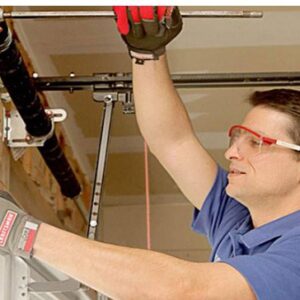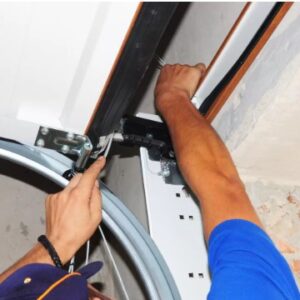Choosing a lock might seem simple until it fails when you need it most. A good lock protects your home, family, and sense of security. A bad one gives the illusion of safety but leaves real gaps anyone can exploit. Before spending money, it helps to know how to recognize poor-quality locks so you can avoid future problems and unnecessary replacements.
Understanding What Makes a Lock Reliable
A reliable lock is built to resist force, tampering, and weather damage. Every lock has moving parts that must work smoothly under pressure, so quality comes down to materials, construction, and internal design. When we inspect a lock, we look for solid metal components, clean movement of the key, and a sturdy strike plate that can withstand repeated use. A cheap lock may look shiny, but its strength lies deeper than the finish.
If a lock feels light in your hand or the key wiggles too much in the cylinder, that’s an early warning sign. Inferior locks are often made from soft alloys that bend or crack under pressure, making them easy targets for forced entry.
Why Price Alone Doesn’t Reflect Quality
Many people assume that higher cost equals higher protection. While price can indicate better materials, it’s not a guarantee. Some brands charge more for design or marketing rather than security performance. We always recommend checking technical details rather than judging by appearance or price tag.
Look for certification standards such as ANSI or BHMA. These ratings measure durability, security, and longevity under testing. A lock with a Grade 1 or 2 rating offers stronger resistance to picking and force. Grade 3 locks, which are often found in cheaper retail stores, are intended for low-risk areas and short-term use.
You can also check the keyway type. Complex keyways that require precise key cutting are harder to duplicate or manipulate. Simple, open keyways make picking tools easier to insert, reducing protection.
Testing Build Quality Before Installation
You can test a lock’s build quality even before you install it. A few simple checks can tell you a lot about how well it will hold up:
Turn the key several times in the cylinder. It should feel firm and smooth, not loose or grinding. If you feel resistance or hear scraping sounds, that often means poor machining or weak internal pins.
Examine the bolt and strike plate. The bolt should extend fully without friction and retract easily when unlocked. A strong strike plate should be thick and firmly attached with long screws that anchor into the door frame, not just the trim.
Check the finish. A low-quality finish wears off quickly, leading to rust and jamming over time. Good locks use protective coatings that withstand weather and daily use.
Recognizing Common Red Flags in Cheap Locks
One of the easiest ways to spot a bad lock is to look at the key. Thin or easily bendable keys often signal poor internal materials. Another warning sign is when a lock comes in lightweight packaging without visible quality markings or testing labels.
Many imported or imitation locks mimic the appearance of trusted brands but lack internal strength. These products may have weak tumblers, shallow pin stacks, or hollow bolts that snap under force. If the packaging avoids listing a grade or country of manufacture, that’s a clue that the maker wants to hide low production standards.
Another red flag is the inclusion of multiple identical keys for several locks. While convenient, that means they share the same key code, making it easier for someone else to find a match. Always ask if your lock can be rekeyed or keyed differently for better security.
How Material Quality Affects Longevity
Lock material plays a major role in how long it lasts. Brass and hardened steel resist wear and corrosion far better than zinc or aluminum alloys. A soft material might look polished at first but will quickly show scratches, chips, or pitting.
The internal pins and springs should also be made of durable metals. Plastic or thin brass components often lose tension, causing the lock to stick or fail to open. If you’re unsure about the internal parts, ask for details or look for a technical description before purchasing.
Outdoor locks should always include weather resistance features. A lock that rusts or freezes easily will lose both function and strength. Silicone lubricants and weather-sealed covers can help, but the base material still determines long-term reliability.
The Role of Lock Standards and Testing
Industry standards exist to protect consumers from poor-quality products. The American National Standards Institute (ANSI) and the Builders Hardware Manufacturers Association (BHMA) use a three-grade system to rate locks.
Grade 1 is the highest level, meant for commercial or heavy-duty residential use. Grade 2 is strong enough for most homes. Grade 3 offers basic security for low-traffic interior doors.
If a product doesn’t list any grade at all, it’s safer to assume it hasn’t been properly tested. These ratings are not just about strength but also about cycle life, meaning how many times the lock can be operated before wearing out.
When evaluating new hardware, we always cross-check these ratings before recommending an installation. For more guidance, you can read about certified lock standards or reach out to a trusted locksmith in Ottawa who can help identify which grade suits your property best.
Why Key Control Matters as Much as Build Quality
Even a strong lock can become weak if its keys are easy to copy. Key control refers to how easily duplicates can be made. Standard keys can be copied at almost any hardware store without authorization. High-security keys, however, require special equipment or authorization from the manufacturer.
Before buying, ask if the key design is patented or restricted. These systems often include registered key tracking that ensures only authorized users can request duplicates. This feature is especially useful for rental properties, shared offices, or multi-family homes.
Comparing Mechanical and Smart Locks
Smart locks have become popular for their convenience, but not all are built with equal care. Many low-cost electronic locks use plastic housings and simple circuits that fail under repeated use or harsh weather. Others rely on Bluetooth signals with minimal encryption, leaving them vulnerable to hacking.
If you’re considering a smart lock, review both its physical build and its digital security features. Check if it offers encrypted communication, two-factor authentication, or backup key access in case of a power failure.
Traditional mechanical locks still outperform many budget smart locks in long-term reliability. The best approach often combines both: a solid mechanical core with smart features from a verified manufacturer.
Maintenance Habits That Extend a Lock’s Life
Even a high-quality lock can wear out early if neglected. Simple maintenance keeps your investment working smoothly. We advise cleaning the keyway every few months with compressed air to remove dust and debris.
Lubricate internal parts with graphite powder or silicone-based lubricant rather than oil, which can attract grime. Also, check the alignment between the latch and strike plate regularly. Misalignment can cause friction that wears down both the bolt and cylinder.
If your key becomes difficult to turn or the bolt sticks, don’t force it. That pressure can damage the pins inside. Instead, inspect for dirt or wear and address it early. When in doubt, professional servicing prevents small issues from turning into complete lock failures.
Why Professional Inspection Makes a Difference
Even with careful research, it’s easy to overlook small flaws that affect long-term reliability. Professionals handle a wide range of lock types daily and can recognize signs of weakness quickly.
A professional assessment is useful when you’re securing a new property or upgrading older hardware. We can test torque strength, identify manufacturing defects, and verify compliance with safety standards. A brief consultation helps ensure your investment matches your real security needs instead of just appearances.
If you’re unsure whether your current locks meet safety standards or want an expert opinion before buying new ones, you can contact us for direct assistance. We can help you understand the difference between cosmetic quality and true protection, saving you time and money in the long run.
Simple Checklist for Buyers
When evaluating any lock in-store or online, run through this quick checklist before making a purchase:
- Check for ANSI or BHMA certification and confirm the grade level.
- Test weight and build. A heavier lock usually means denser metal and better protection.
- Look for tight tolerances in the keyway and bolt movement.
- Read user reviews carefully, especially those mentioning failures under pressure or harsh weather.
- Confirm that replacement parts and rekeying options are available.
Following these steps ensures you’re buying a lock designed for real use rather than one that just looks strong.
FAQ
- How can I tell if a lock is easy to pick?
Locks with simple keyways and shallow pin stacks are easier to manipulate. Choose a lock with complex keyways and security pins that resist picking tools. - Does weight always mean higher quality?
Not always, but it often indicates denser metal. Lightweight locks are usually made from softer alloys that bend or crack easily. - Are smart locks as secure as traditional ones?
Only if built with proper encryption and sturdy materials. Many cheap smart locks fail both digitally and physically, so balance convenience with tested reliability. - How often should I replace my home locks?
You should replace them when they start showing signs of wear, corrosion, or mechanical sticking. Regular inspection helps identify problems before failure. - What’s the most important factor when buying a new lock?
The combination of solid materials, certified grading, and restricted key control offers the best overall security for most homes.




